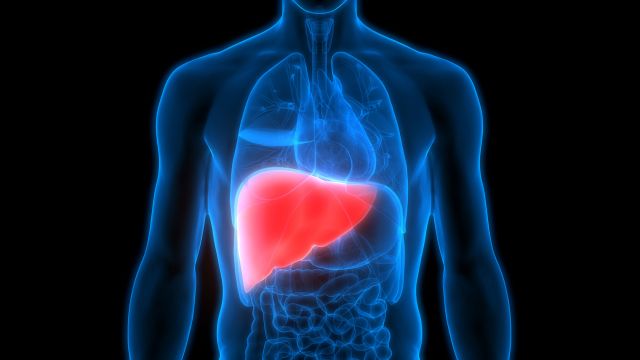Deaths related to liver cancer climbed by as much as 43 percent among U.S. adults from 2000 to 2016, the Centers for Disease Control and Prevention (CDC) reported in July 2018.
Death rates for men jumped from 10.5 per 100,000 people in 2000 to 15.0 per 100,000 in 2016. Women had a 40 percent increase, from 4.5 to 6.3 per 100,000 in the same time period.
The striking increase stands out especially because deaths from other cancers combined have dropped since 1990. Liver cancer was the ninth leading cause of cancer death in 2000 but had bumped up to sixth place by 2016.
Meanwhile, a study published in the journal BMJ in July 2018 showed a parallel rise in death rates from cirrhosis, a condition marked by scarring and permanent damage to the liver.
Between 1999 and 2016, annual deaths from cirrhosis in the U.S. rose by 65 percent, with the burden falling disproportionately on men by a margin of 2 to 1 compared with women.
Death rates vary by age and geography
In the CDC report, researchers used death certificate information from the National Vital Statistics system to track death rates. They looked at causes of death for adults age 25 years or older and also at rates for specific populations based on race and ethnicity, sex and geographical location.
Death rates from liver cancer are highest among adults over age 75, but the middle-aged population—those 55 to 64 years old—had a 109 percent increase from 2000 to 2013.
Regional differences also emerged. In 2016, the District of Columbia had the highest rate of deaths related to liver cancer at 16.8 per 100,000 while Vermont had the lowest rate at 6.0 per 100,000.
In 2016, the District of Columbia had the highest age-adjusted liver cancer death rate and Vermont had the lowest rate.
The increase was not consistent across all populations, however. Rates decreased by 22 percent for non-Hispanic Asian or Pacific Islanders. Men, overall, had more than twice the death rate of women.
At the same time, younger Americans have borne the brunt of the recent rise in mortality from cirrhosis. The BMJ study found that between 2009 and 2016 specifically, people 25 to 34 years of age had the highest average yearly increase in cirrhosis mortality, at a clip of about 10.5 percent per year.
Geographically, the highest increases in cirrhosis death rates were clustered in western and southern states—particularly Kentucky, New Mexico, Arkansas, Indiana and Alabama—with Native Americans, whites and Hispanic Americans experiencing the highest rises.
Underlying causes for increase in liver cancer death rate
In addition to the variations by region, ethnicity, age and sex, the results from the CDC study have another twist.
“The study includes data on patients with two different types of liver cancer,” says Kabir Mody, MD, an oncologist and assistant professor of medicine at the Mayo Clinic in Jacksonville, Florida.
One type is hepatocellular carcinoma, which arises from cells in the liver and is the most common form of liver cancer. The other is cholangiocarcinoma, which arises from cells in the bile ducts, he says.
Cholangiocarcinoma, or bile duct cancer, is less common, but “it’s likely that both are on the rise significantly,” says Dr. Mody, who was not involved in the CDC report. Treatments for these cancers range from surgery to chemotherapy, radiotherapy or transplant, depending on their stage.
The increase in mortality observed in the CDC report is probably real, says Mody, and a likely culprit is liver disease resulting from hepatitis C infections or from obesity. Obesity, a risk factor common to both hepatocellular carcinoma and bile duct cancer, is tied to fat buildup in the liver. Mody says this buildup can create an environment that promotes the development of both kinds of liver cancer.
Alcohol is a contributor, too
Raymond T. Chung, MD, Director of Hepatology and Liver Center at Massachusetts General Hospital, and Councilor on the American Association for the Study of Liver Diseases Governing Board, also sees real increases behind the numbers.
Pointing to both hepatitis C and obesity, he adds alcohol.
Among young adults in particular, “alcohol is causing disproportionate damage in the form of cirrhosis, advanced scarring of the liver,” says Dr. Chung, who did not contribute to the CDC report.
“We do not yet understand why this is happening in this age group,” Chung notes, “and further study is required to determine whether this is due to sheer quantity or type of alcohol consumed, genetic factors or the presence of other forms of liver injury.”
In fact, alcohol-related liver disease was the main driver for the rise in cirrhosis death rates seen in the 25 to 34 age group in the BMJ study.
In a press release, BMJ study co-author Elliot B. Tapper, MD, a liver specialist at the University of Michigan, said that more research is needed to explain the surge in alcohol-related liver disease in younger Americans. But he offered a theory about the timing of the upswing, which kicked off around the time of the economic downturn in 2009.
“We suspect that there is a connection between increased alcohol use and unemployment associated with the global financial crisis,” he said.
The importance of maintaining liver health
In the face of such increases in liver cancer and cirrhosis mortality, the next question is what to do about them.
Mody says that the numbers serve as an alert for clinicians to be on the watch for possible signs. Liver cancer symptoms include abdominal pain and unexplained weight loss.
To ensure best outcomes, a treatment team should include members from several disciplines, Mody says, including oncology, surgery, radiology and others, all with deep experience treating liver cancer. Another step for patients is to look for clinical trials to enroll in, he says.
For prevention, Mody says that “a diligent approach to addressing the obesity crisis from a preventative medicine perspective is critical.”
In addition to addressing obesity, Chung says that another public health front is alcohol consumption.
“It is important to emphasize that alcohol, when consumed, should be done so in moderation,” he says. People who have cirrhosis should avoid it altogether.
Chung also mentions as risk-reducing steps getting vaccinated to prevent exposure to the hepatitis A and B viruses (both of which can also damage your liver) and reducing harm to the organ by reducing alcohol consumption.






